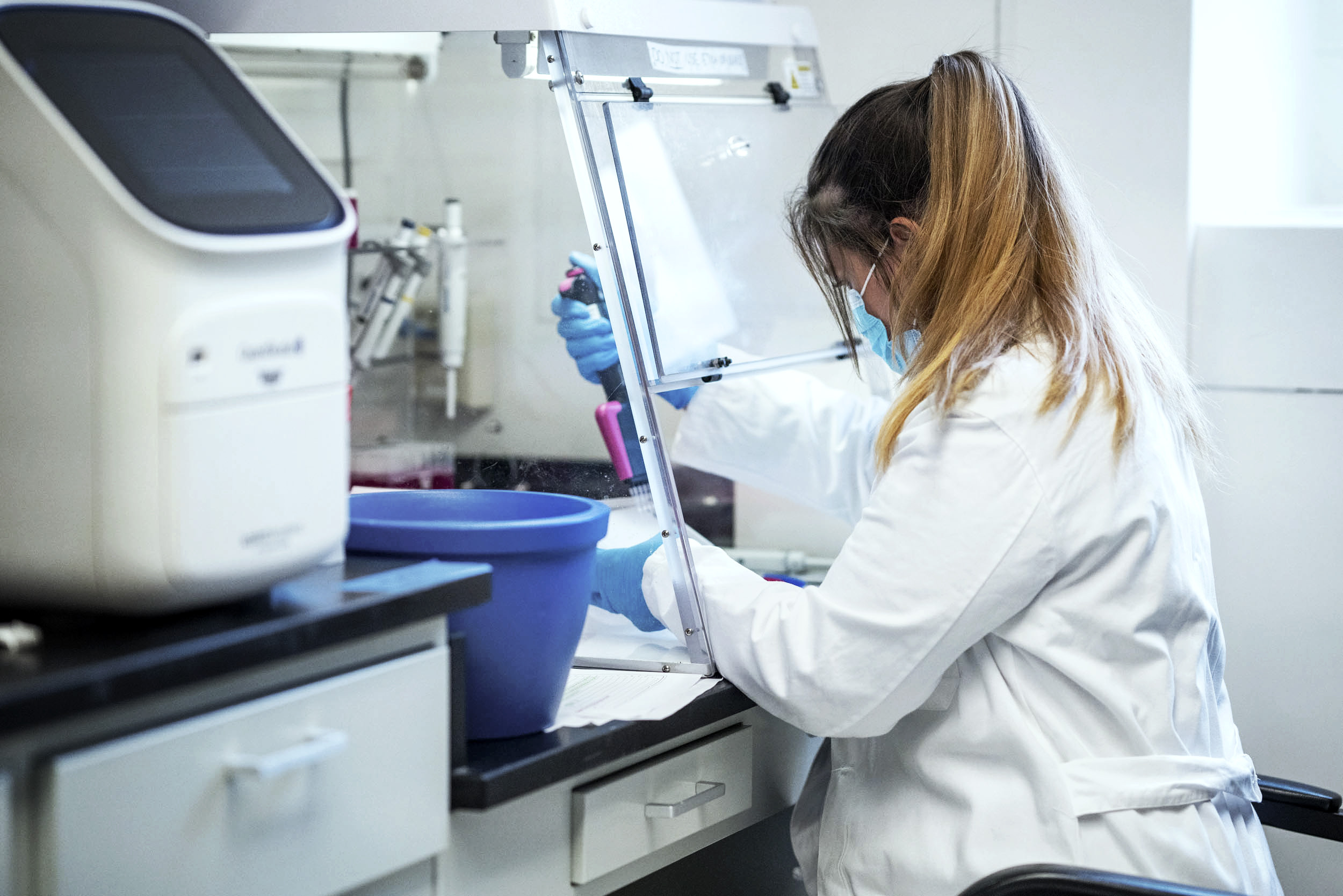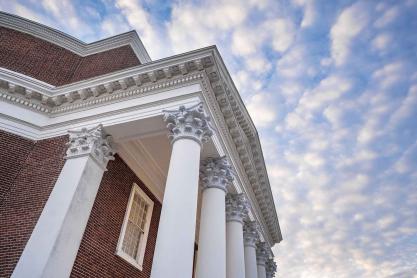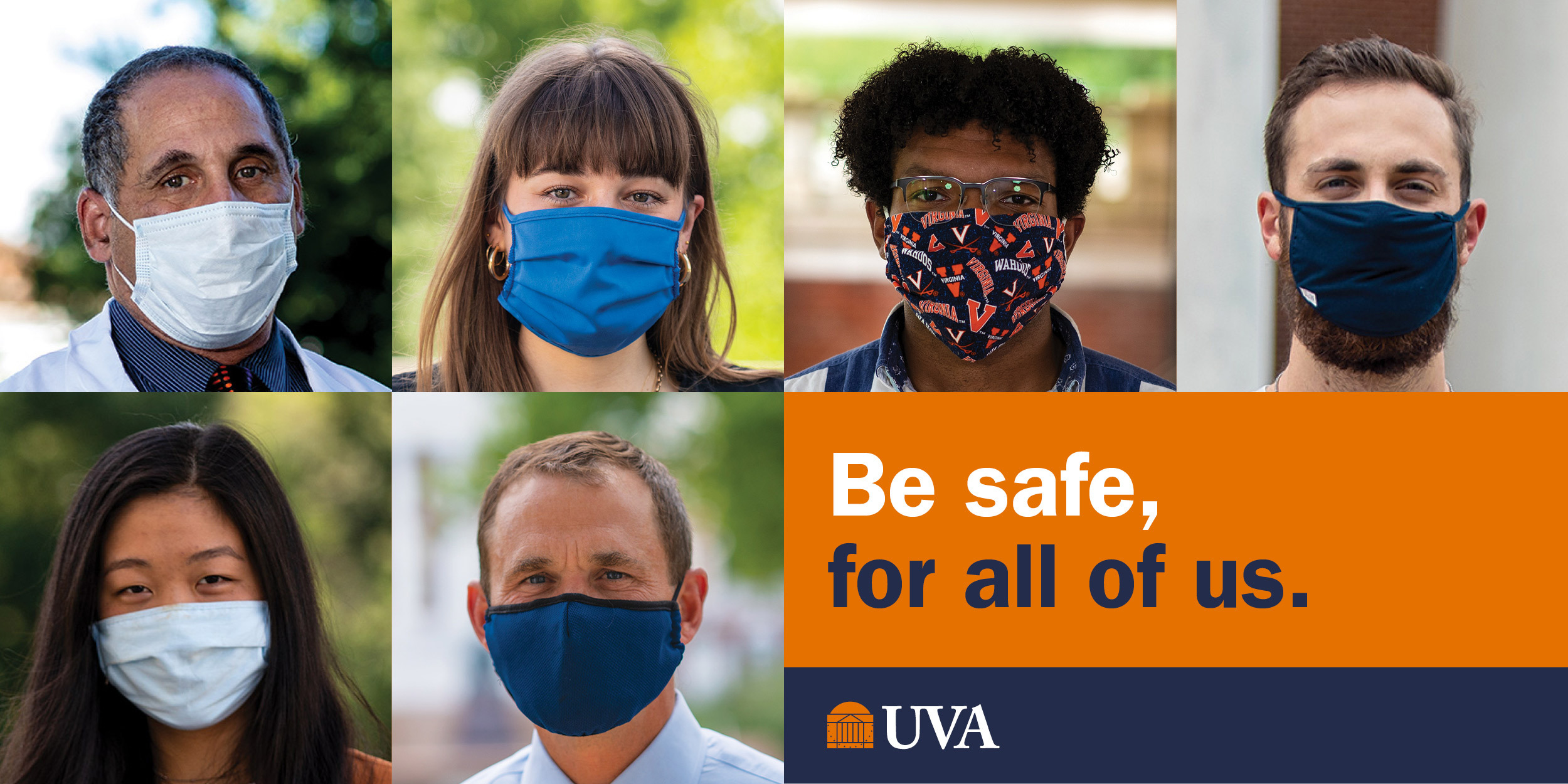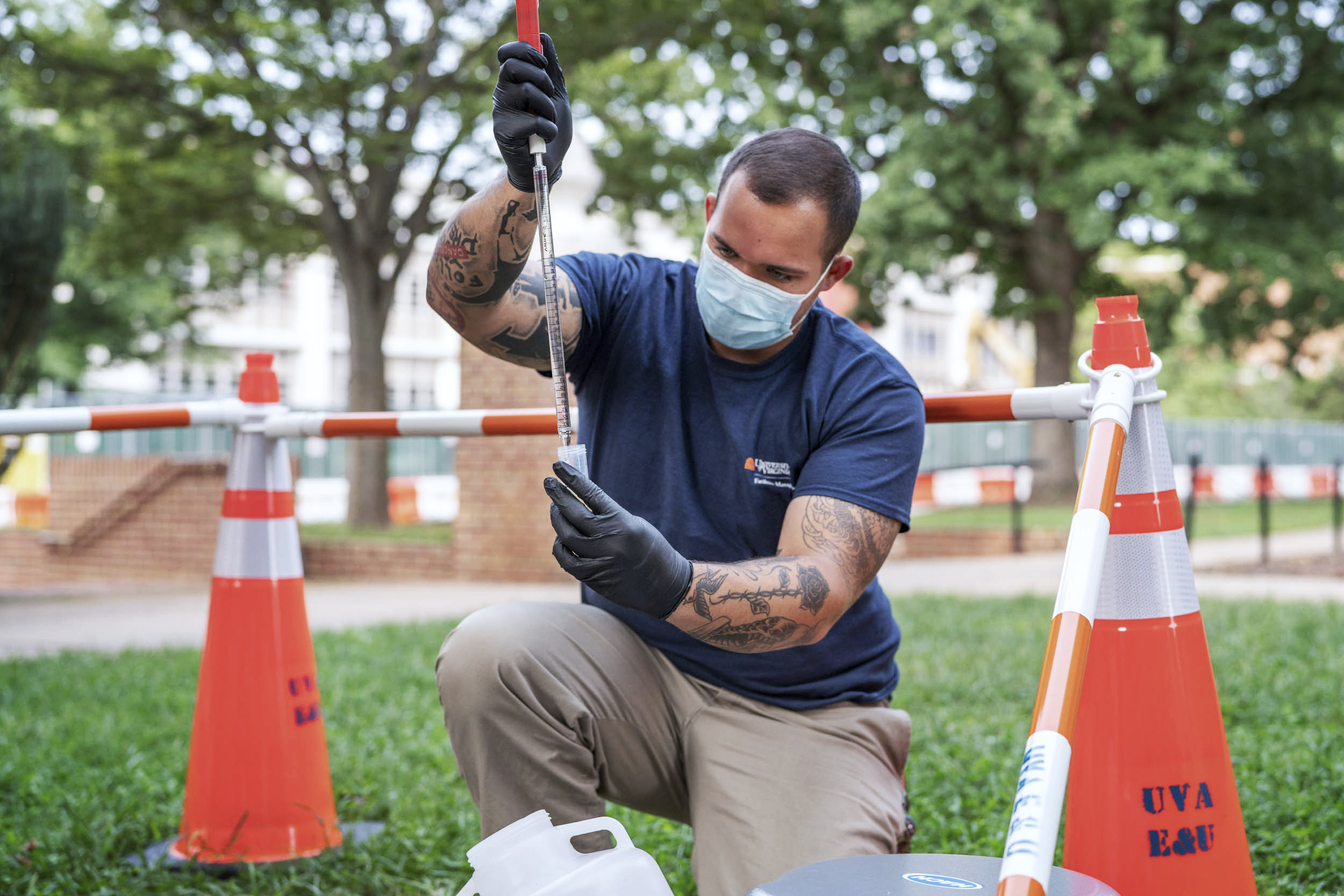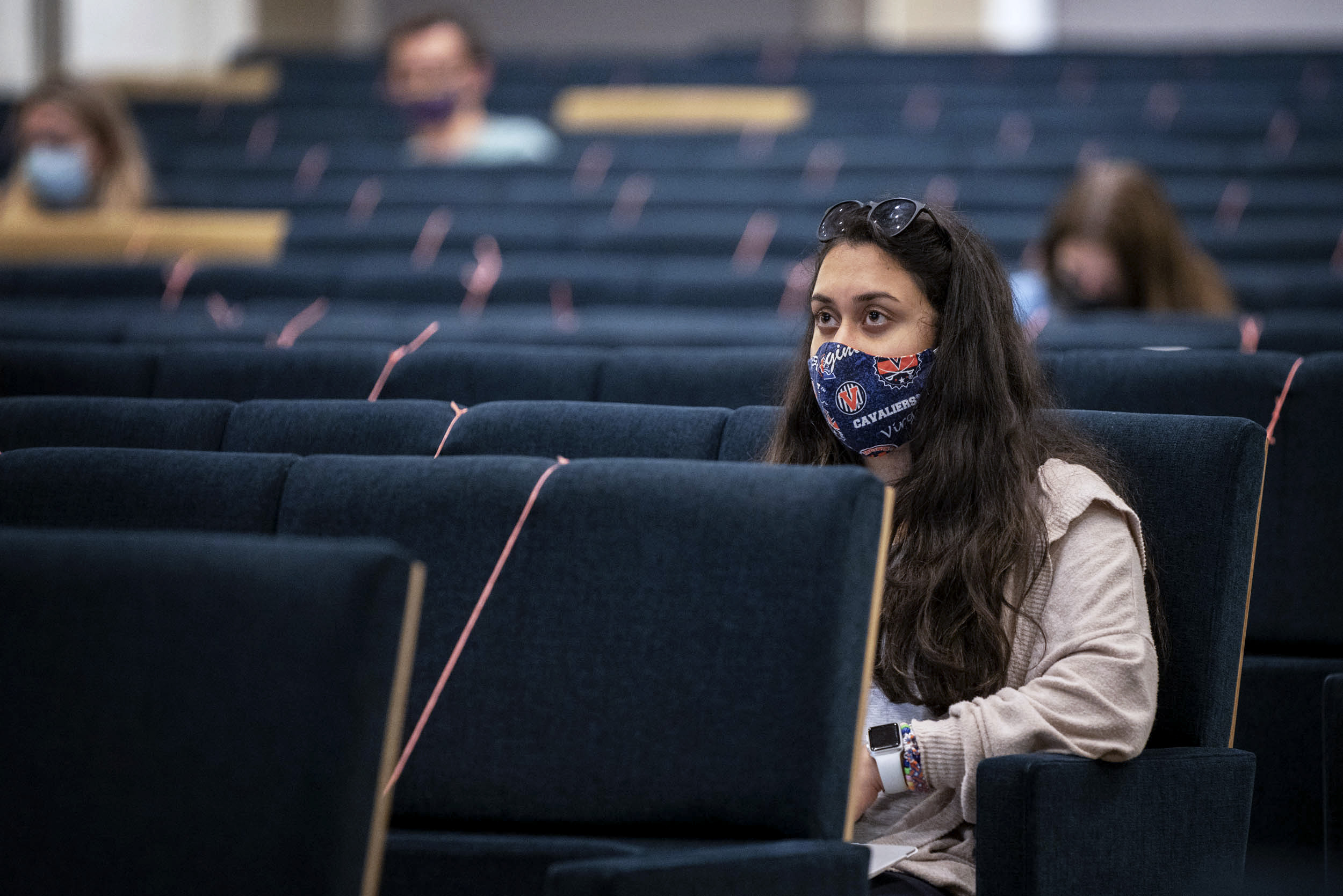Every afternoon this fall semester, teams at the center of the University of Virginia’s coronavirus strategy gather on Zoom videoconferences to plan the hours and days ahead.
The calls include doctors and epidemiologists; academic and operations leaders; researchers and testing coordinators. For an institution moving against an unpredictable adversary, these are forums for sharing intelligence and assessing conditions on the ground.
The strategy sessions illustrate UVA’s ever-evolving approach to confronting COVID-19 – necessary to solve a daily Rubik’s cube of emerging and shifting data, anticipation of what might happen, and decisions about how and where to take action.
There are, in fact, multiple conferences each day with different focus areas. This story draws from several consecutive days of conferences of UVA’s epidemiology team and its prevalence-testing oversight team.
The group responsible for testing oversight, among other things, reviews the number of positive cases in residence halls from each morning, looking for patterns and clues that would help them recommend a course of action. How many dorms showed new cases, and how many cases were in each location? Were the positive cases on one or multiple floors, centered on a single hallway or scattered? Were groups of roommates involved? Had the dorm been tested previously? What kinds of tests were used?
